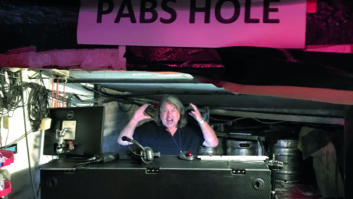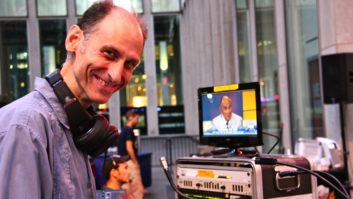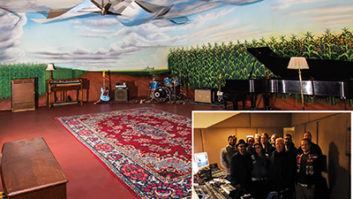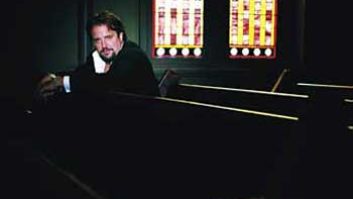The sky is falling — at least part of it is for wireless audio users, whether for broadcast, production sound, Broadway, concerts, sporting events or houses of worship, affecting mics, IFB, radio intercoms or in-ear monitoring. With the changeover to DTV broadcasting in February 2009, our old pal analog television is going the way of the rumble seat. Meanwhile some very large, well-financed players are looking at picking up a lot of soon-to-be-unused frequencies for new uses, such as portable Internet devices.
So what does any of this have to do with audio? Plenty. Because unlike CB radio and maritime navigation, pro audio never had an official allotment of frequencies from the FCC for wireless use. We rode on the coattails of broadcasters, first using unused VHF TV frequencies and later mainly moving to the middle and upper UHF bands. Now here’s the rub: DTV operates with more precision than analog TV channels, which require large areas of “white space” padding around each frequency to avoid interference from adjacent channels. And that white space offered a mostly safe haven for wireless audio users. So with no white space requirement, DTV’s arrival leaves a whole lot of ex-analog TV spectra, which the FCC has proven more than willing to reallocate to deep-pocketed companies such as Sprint Nextel, Verizon, AT&T/Cingular and others who see boom times ahead for wireless Internet and mobile communications.
The situation caught the attention of Sens. John Kerry and John Sununu, who introduced separate bills mandating that the FCC allocate the vacant spaces for wireless broadband. This is a good thing, with the potential of bridging Internet access to rural areas, and perhaps even bringing new players to compete in the cable and broadband markets. However, a few issues must be resolved. First, portable wireless products are two-way devices, operating as both receivers for downloading data, video, music, etc., and transmitting everything from e-mails and text messaging to baby pictures. With this burgeoning market, moving slowly with adequate testing to ensure that these devices don’t interfere with existing products operating in the white spaces (such as wireless microphones) is essential.
With that in mind, Illinois congressman Bobby Rush introduced H.R. 1320, “The Interference Protection for Existing Television Band Devices Act of 2007.” Rush’s bill doesn’t seek to negate the Kerry and Sununu proposals, but would allow some white space use for gear such as wireless mics, while asking the FCC to require interference testing of portable broadband devices. H.R. 1320 is a balanced approach, and audio pros should encourage their local representatives to support this bill. Get involved. Just go to www.house.gov/writerep, enter your state and zip code and an e-mail form pops up with your representative’s name. It couldn’t be easier.
The long-term effect of any frequency reallocation remains unsure. Will your wireless gear work after the changeover? Maybe, maybe not. It may come down to losing certain frequencies or having a shorter operating range, but at least the Rush bill gives our industry and the general public the best shot at maintaining high-quality wireless communications in the years to come.







